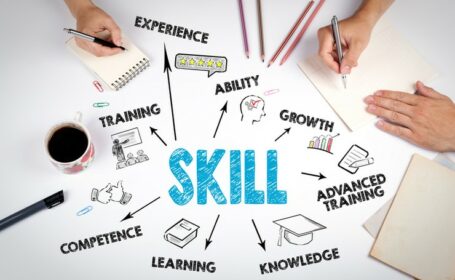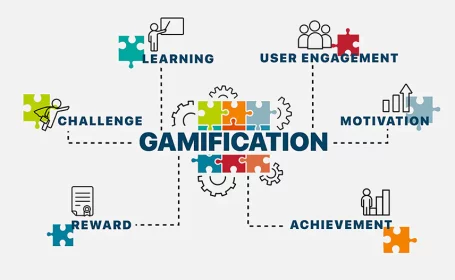

How to Build an Attractive Employee Welfare Regime: The Key to Retaining Top Talent in Vietnam’s Manpower Industry
- trienkhaiweb
- 3 July, 2024
- 0 Comments
In Vietnam’s rapidly evolving manpower industry, employee welfare regimes are no longer just a “nice to have” – they’re essential for attracting and retaining skilled workers. At Quinn Vietnam Manpower, a leading name in labor export, we understand the importance of aligning modern human resource management trends with employee needs to create a motivated and loyal workforce.
What is an Employee Welfare Regime?
An employee welfare regime goes beyond basic salary and bonuses. It encompasses various financial and non-financial benefits that enhance the employee experience. These benefits can include health insurance, additional leave, professional development opportunities, flexible work arrangements, and more. The goal is to create a comprehensive package that not only incentivizes employees but also fosters a positive and supportive work environment.

Why Employee Welfare Matters in Manpower Recruitment and Retention
1. Reducing Employee Turnover in a Competitive Market: In Vietnam’s manpower industry, competition for skilled workers is fierce. A robust employee welfare regime acts as a powerful magnet, increasing employee satisfaction and loyalty. When employees feel valued and supported, they are less likely to seek opportunities elsewhere, leading to reduced turnover rates and associated costs for businesses like Quinn Vietnam Manpower.
2. Boosting Manpower Productivity: Employees who are free from financial stress and feel appreciated are more likely to be engaged and productive. A well-designed welfare regime can alleviate concerns related to healthcare, finances, and work-life balance, allowing employees to focus their energy on their tasks and contribute to the company’s success.
3. Gaining a Competitive Edge in Manpower Recruitment: In a market where skilled labor is in high demand, a comprehensive welfare package can be a game-changer. Quinn Vietnam Manpower recognizes that a strong employer brand, built upon a reputation for excellent employee care, attracts top talent. Prospective employees are more likely to choose a company that prioritizes their well-being.
Building an Effective Employee Welfare Regime: A Step-by-Step Guide
Step 1. Understand Your Workforce: Conduct surveys, interviews, or focus groups to gauge the specific needs and preferences of your employees. Consider factors such as age, experience level, and personal circumstances. Quinn Vietnam Manpower tailors its welfare programs to address the unique concerns of its diverse workforce, ensuring maximum impact.
Step 2. Set Clear Goals: Align your welfare regime with your broader business objectives. Are you aiming to increase retention rates, boost productivity, or attract specific skill sets? Defining these goals will help you prioritize the most effective benefits.
Step 3. Plan Your Budget: A well-structured budget is crucial for the long-term sustainability of your welfare program. Quinn Vietnam Manpower allocates resources strategically, balancing the cost of benefits with their potential return on investment in terms of improved employee performance and retention.
Step 4. Implement and Communicate: Once your welfare regime is in place, effective communication is key. Ensure all employees understand their entitlements, how to access benefits, and the value these programs bring to their lives. Quinn Vietnam Manpower maintains open communication channels to gather feedback and continuously improve its offerings.
Step 5. Evaluate and Refine: Regularly assess the effectiveness of your welfare regime. Track metrics like employee satisfaction, turnover rates, and productivity levels. Quinn Vietnam Manpower uses this data to identify areas for improvement and adapt its programs to the changing needs of its workforce.

Emerging Trends in Employee Welfare in Vietnam’s Manpower Industry
Financial Well-being Initiatives: Beyond competitive salaries, companies are increasingly focusing on financial wellness programs. These can include financial planning workshops, access to low-interest loans, and assistance with debt management. Quinn Vietnam Manpower recognizes that financially secure employees are more likely to be stable and focused contributors.
Flexible Work Arrangements: The COVID-19 pandemic accelerated the adoption of remote work and flexible schedules. Quinn Vietnam Manpower offers various work arrangements to accommodate employees’ preferences and promote work-life balance. This flexibility is particularly appealing to the younger generation of workers.
Professional Development Opportunities: Investing in employees’ skills and knowledge not only benefits the individual but also enhances the overall capabilities of the workforce. Quinn Vietnam Manpower provides training programs, workshops, and mentorship opportunities to empower its employees and keep them at the forefront of the industry.
In conclusion:
A well-crafted employee welfare regime is a cornerstone of success in Vietnam’s manpower industry. Quinn Vietnam Manpower’s commitment to providing comprehensive benefits is a testament to its dedication to its workforce. By prioritizing employee well-being, businesses can attract, retain, and motivate top talent, ultimately driving growth and innovation in the ever-evolving manpower sector.
Related articles
Employee Empowerment with Quinn Vietnam Manpower
In today’s dynamic business landscape, organizations are increasingly recognizing the importance of employee empowerment as a key driver of success. Quinn Vietnam Manpower, a leading provider of manpower solutions in Vietnam, understands that empowered employees are more engaged, productive, and committed to organizational goals. This article delves into the concept of employee empowerment, exploring its…
Quinn Vietnam Manpower’s 5 Steps to Successful Coaching in 2025
In today’s dynamic business environment, maximizing your manpower’s potential is crucial for success. Effective coaching programs are key to unlocking this potential, fostering employee growth, and driving organizational performance. Quinn Vietnam Manpower, a leading provider of manpower solutions, presents a comprehensive guide to successful coaching in 2025. Whether you’re leading coaching sessions yourself or partnering…
Functional Skills: A Guide for Quinn Vietnam Manpower’s Workforce in 2025
In today’s competitive job market, possessing strong functional skills is more critical than ever. For Quinn Vietnam Manpower, equipping our manpower resources with these essential skills is key to their success and the success of our partner businesses. This comprehensive guide explores the importance of functional skills, particularly in Math and English, and how Quinn…
Level Up Your Workforce: Gamification Strategies for Quinn Vietnam Manpower
In the competitive landscape of Vietnam’s manpower industry, attracting, engaging, and retaining top talent is more critical than ever. Quinn Vietnam Manpower recognizes the power of innovative solutions, and gamification is emerging as a game-changer in the realm of human resources. By integrating game mechanics and elements into various HR processes, Quinn Vietnam Manpower can…
3 Communication Skills Every Manager Needs to Thrive
In today’s rapidly evolving business landscape, effective communication skills are more critical than ever for managers. Whether you’re a seasoned leader or newly promoted, honing your communication abilities can significantly impact your team’s performance, morale, and overall success. This article delves into three essential communication skills every manager needs to master in 2025 and highlights…
Harnessing the Power of Insights with Quinn Vietnam Manpower
In the dynamic landscape of 2025, where businesses face unprecedented challenges and opportunities, the ability to gain profound insights is more critical than ever. For project management (PM) in Vietnam, this rings especially true. Quinn Vietnam Manpower, a leading provider of manpower solutions, recognizes the crucial role of insights in driving project effectiveness and organizational…







